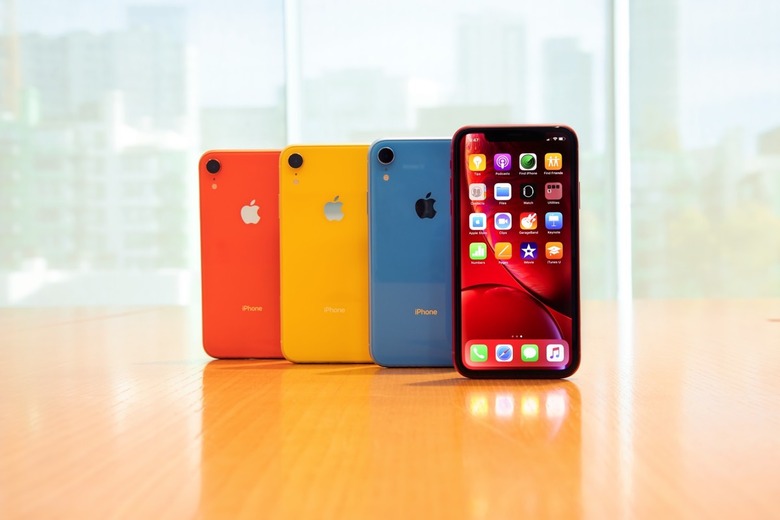Shocking! Apple's iPhone Sales Might Actually Be Stronger Than Expected
Over the past few weeks, shares of Apple have been in something of a free fall, plummeting from an all-time high of $231 this past October to about $165 earlier this week. The reason behind the somewhat abrupt decline in value can be traced back to a November report claiming that iPhone XR demand is lower than anticipated and that Apple has slashed component orders. Since then, subsequent reports — often sourced from supply chain rumors — have all echoed the same point, namely that folks aren't picking up the iPhone XR in droves. While it's admittedly never a good idea to place too much stock in supply chain rumors, the chorus of reports pointing to lukewarm interest in the iPhone XR became impossible to ignore.
The thing is, we've been down this road before. Over the past few years, there have been a number instances where rumors regarding sluggish iPhone sales have turned out to be completely off the mark, if not completely baseless. In light of that, a new report from Bloomberg relays that Apple's top two manufacturing partners — Foxconn and TMSC — both reported strong revenues for November. Specifically, both companies saw revenue surge by about 5.6% last month. In short, the hysteria surrounding iPhone XR demand may be just that: Hysteria.
While we've seen financial reports from various iPhone component suppliers in recent weeks, data from Foxconn and TMSC is unquestionably far more instructive given that Foxconn is Apple's primary iPhone assembler and that TMSC is responsible for all of processors used in the iPhone.
The report reads in part:
While reflecting just 30 days of business, TSMC's and Hon Hai's performance comes in the middle of the year's busiest quarter and may help balance the narrative that Apple's latest line-up — particularly the cheapest iPhone XR — is falling flat with global consumers. Hon Hai's November revenue of NT$601.4 billion ($19.5 billion) was a record for the month and takes January-November sales growth to almost 16 percent — on track for its fastest pace of annual growth in years.
Clearly, the sky is not falling and the iPhone XR may not be the dud many have made it out to be. At the very least, sales of pricier iPhone XS models are seemingly strong enough to offset any lower than expected demand in the iPhone XR.
Unfortunately, there's a good chance we'll never get a firm grasp of how the iPhone XR is doing given that Apple will no longer release unit sales as part of its quarterly earnings report. The main takeaway, though, is that supply chain rumors are just that — rumors — and should be taken with a requisite grain of salt. It's especially important not to put too much stock in these rumors given that Apple often relies upon multiple component suppliers as a means to ensure plentiful supply and secure favorable pricing.
To this point, it's worth revisiting the following Tim Cook quote on this very topic from a few years back.
Months of rumors about order cuts and so forth, so let me take a moment to comment on these. No comment on any particular rumor.
I suggest its good to question the accuracy of any kind of rumor about build plans. Even if a particular data point were factual, it would be impossible to interpret that data point as to what it meant to our business. The supply chain is very complex and we have multiple sources for things. Yields can vary, supplier performance can vary. There is an inordinate long list of things that can make any single data point not a great proxy for what is going on.
Incidentally, shares of Apple are still trading below $170, and you can bet that Apple is buying up as many shares as it can. Looking ahead, with no iPhone unit sales set to be divulged, analysts will instead have to focus on Apple's overall revenue and profits as opposed to lazily keeping an eye on iPhone unit sales across a somewhat arbitrary three-month period.
